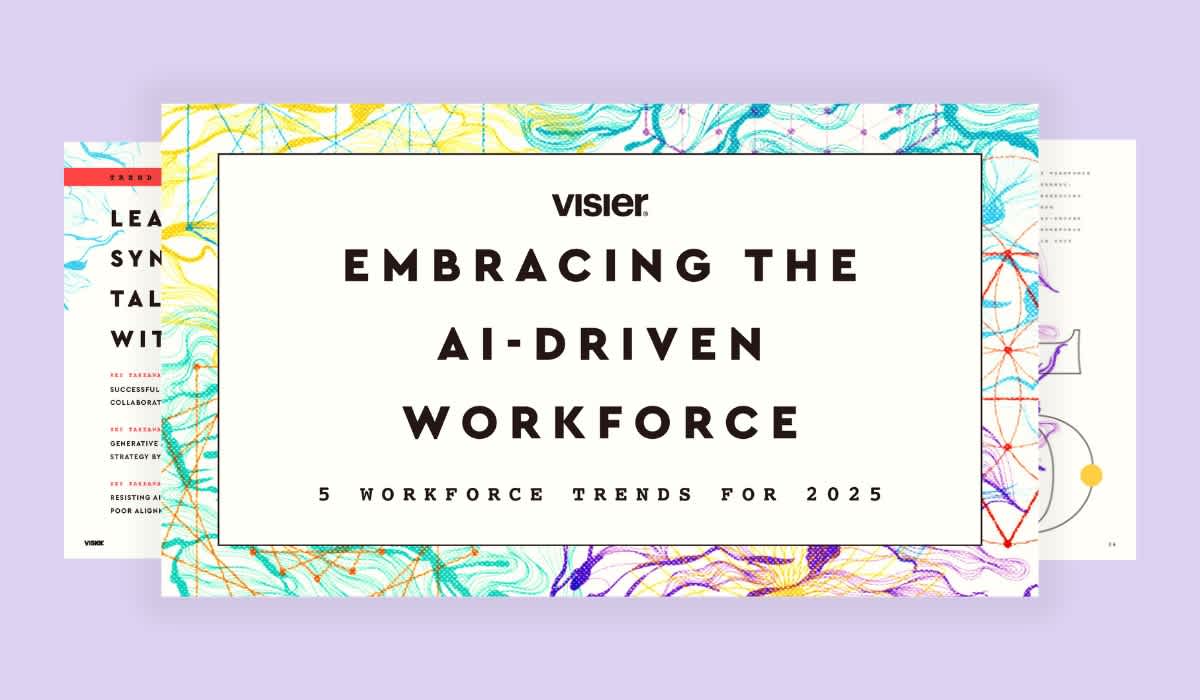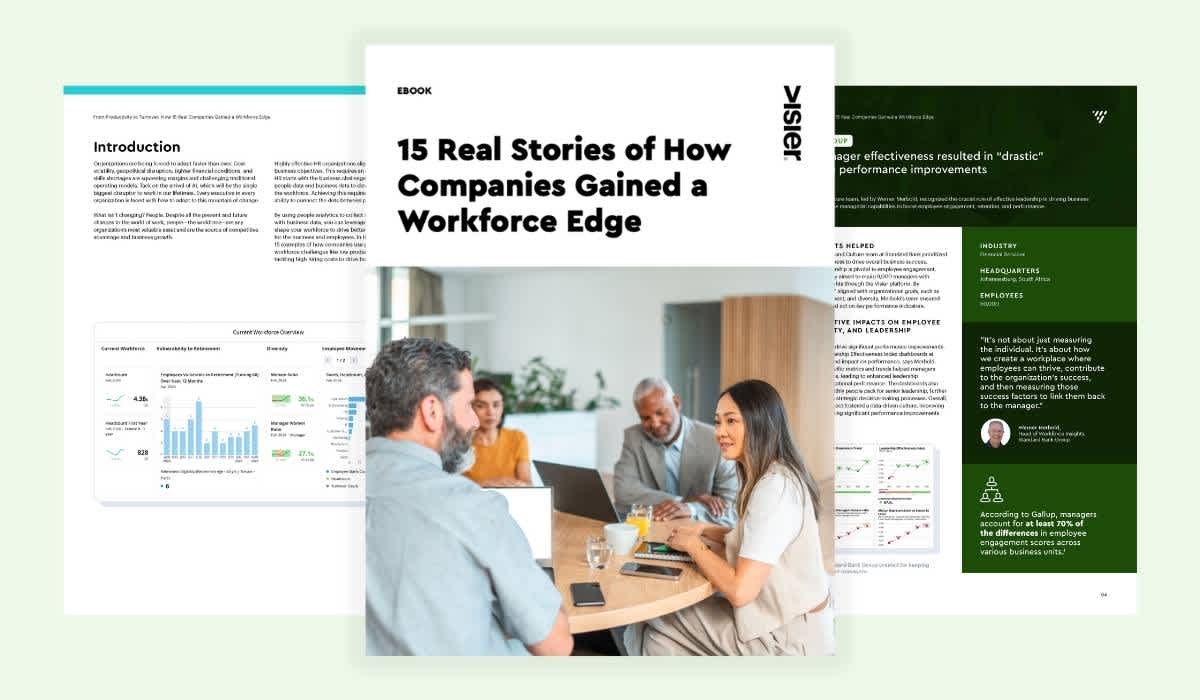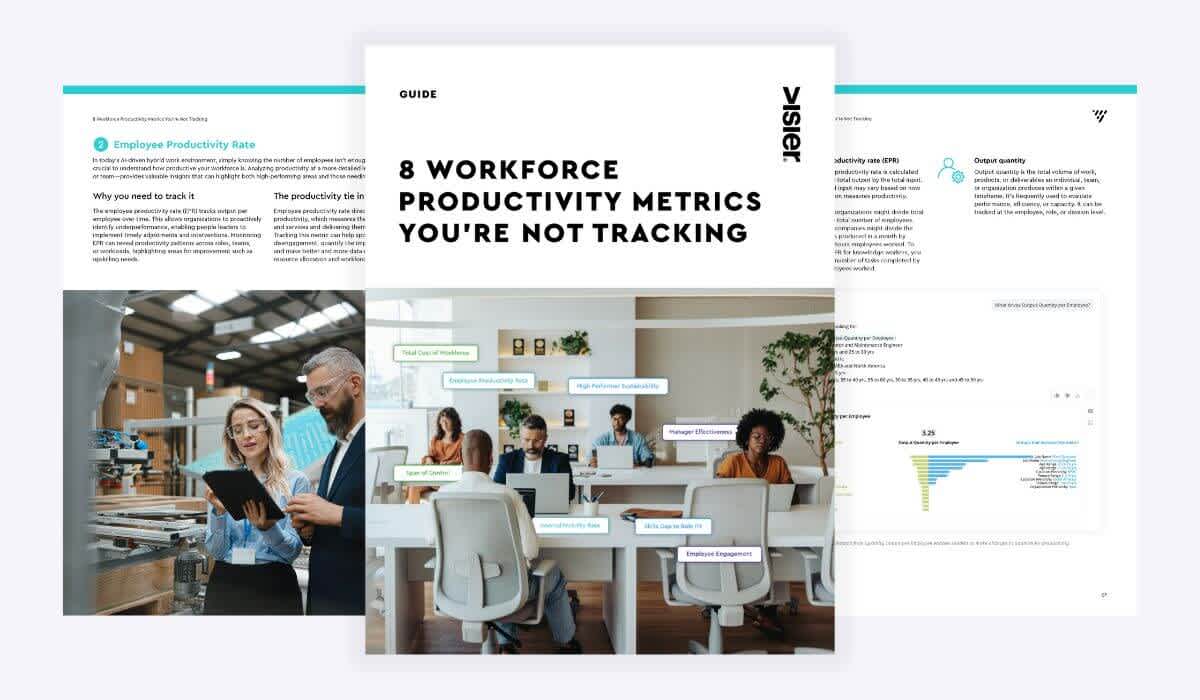3 Ways to Present Headcount Data to Your CEO
Learn how HR leaders can present headcount data to be more impactful and elevate their strategic role during meetings with the CEO and CFO.

A simple tally of employees should be shared without controversy, but when an HR executive presents the headcount report during the monthly P&L meeting with the CEO and CFO, it can become the most contentious item on the agenda.
Through my past experience consulting with large enterprises on talent and HR strategy, I have heard countless stories about the CFO and CHRO producing headcount numbers that don’t match. A 20-minute discussion usually ensues about which number is right and why. This is a low-value discussion that sets the wrong tone between two partners who should have a strategic alliance.
And can you guess who carries the burden of explaining their numbers? It’s not the CFO.

Doing the headcount math
In most cases, this is not technically HR’s fault. In fact, HR and Finance can report different figures and both be arithmetically correct. In this older (but still relevant blog post) academics Donald M. Atwater and Brad Jorgensen explain how this discrepancy can happen, particularly when each department uses different definitions for who is a worker.
Atwater and Jorgensen accurately sum up the headcount conundrum this way: “An objective observer could say these counts are technically all correct. A frustrated executive would say there should be one, and only one, answer.”
The old model of each department only having access to certain information limits the organization’s ability to streamline strategic decision-making and draw input and insights from a broader range of people.
In fact, according to InfoDesk, “Organizations pay heavily for missing critical information; through lost productivity, missed business opportunities, increased risk, and underused information resources.
Yes, establish one source of truth, but….
While headcount reconciliation remains a thorny problem for many HR leaders, some advanced organizations have successfully tackled this issue at the core.
The most proactive teams start with better collaboration, ensuring the headcount and budgetary impact data definitions are consistent across HR and Finance. They also have the discipline not to create shadow systems, and avoid using the “reconciliation” spreadsheet carried in one department or another as an excuse not to fix processes at the root cause.
At the technology level, when all the relevant data is accessed from one virtual platform, it eliminates the need for HR to have a shadow system for Finance. HR leaders can then eliminate the time that their teams spend getting their numbers to match what Finance has presented.
This is definitely a smart move in terms of avoiding headcount disputes, but here’s the thing: When the drama clears, another problem remains.

Data visualization showing headcount grouped by department
Traditional headcount reports are boring
For most HR leaders, the big issue is that headcount reports are–for lack of a better term–boring.
Boring headcount reports fail to help HR articulate what is needed to meet a business goal or need. They fail to reveal how staffing shortfalls will impact revenue goals or net promoter scores. They fail to reveal how investments (or a lack thereof) will impact trends such as a pending talent shortage. As a result, traditional headcount reports don’t help HR gain the same strategic footing as Finance.
By shifting the focus away from isolated headcount metrics towards dynamic trends that matter to the business, strategic HR leaders are commanding attention and gaining C-suite trust. Lydia Wu, Head of Talent Analytics and Transformation at Panasonic North America, and her team are regularly brought in resolve all business challenges pertaining to talent using data and people analytics.
“I fundamentally believe it’s our job as HR analytics practitioners to help the C-suite understand the challenges of the workforce,” says Lydia. “Not just as they see it—but as the individual contributors, as the frontline workers see it.”
Lydia Wu, Head Of Talent Analytics And Transformation At Panasonic North America
Lydia’s ethos is echoed by by RedThread Research. Their report, Unlocking the Hidden C-Suite Superpower: People Analytics, found that effective CHROs “provide context to other C-suite leaders (how insights connect to broader talent trends as well as about nuances in the data and to people analytics leaders (about business strategy and its connection to people strategy, political issues, etc). Establishing one source of truth for headcount is important, but it does not negate the need for storytelling that is based on a more holistic, dynamic view of people data.

If you are an HR leader who wants to elevate your strategic role during meetings with the CEO, consider making these three upgrades:
Upgrade 1: Avoid presenting people as an inventory
Your investment advisor doesn’t report on the number of stocks you own. She tells you how they are performing relative to the market and where they are headed. In other words, she provides you with a valuation of your assets.
In the same way, you need to provide your CEO with a valuation of your people assets. But in most headcount reports, the link between talent performance and business outcomes is not made, and people are presented as an inventory of items.
For example, it is very common to look at the net change in headcount for a given period of time. However, this gives organizations little visibility into how many people are new to their roles, which can create a false sense of security (Hint — try using a waterfall chart to present changes in headcount). Organizations then use this metric as the basis for decisions around how many people the organization should hire, transfer, promote, or layoff.
Instead of looking solely at the overall net change, focus on the movement of people within — as well as in and out — of your organization. By putting headcount numbers in the right context, you can answer the true question at-hand: whether you have a shortfall or surplus in people who are ready to be productive.

Data visualization comparing headcount for different job levels
Upgrade 2: Focus on the future, not the past
Sales will report, not just on the number of bookings made, but on the sales pipeline. As HR expert Dr. John Sullivan explains in this post on influencing CEOs, “executives want to hear about what will happen ‘next year’ when there is time to do something about it.”
Trends that grab the CEO’s attention will mirror sales in terms of being future-focused. The best time to find out if there is a shortage of key roles is long before production milestones are missed or customers stop making repeat visits due to poor service.
Most headcount reports, however, are historical and reactive. When HR can provide headcount projections that link up with future impacts on areas such as revenue, customer satisfaction, or productivity, relevant stakeholders can take action.
Upgrade 3: Translate headcount data into dollars
CEOs want to see the bottom line impact of changes. But this is difficult to determine and communicate with headcount numbers. The “number of heads” really needs to be converted into how much the organization is spending on people.
Providing the Total Cost of Workforce (TCOW)–the full cost for people who contribute work to the organization, including all of the labor costs and the workforce overhead costs — will help you understand and communicate how potential decisions would impact your organization in the future.
And when presenting TCOW, make sure you show the total. This means incorporating contingent labor and any other labor that counts as staff augmentation. It’s common to avoid traditional approval processes by engaging “non-requisition” headcount in the form of contingent workers or temporary labor. Be sure to give a holistic description of labor costs.
One large multinational manufacturer used our people strategy platform to analyze its workforce by location—against dimensions of revenue generation, cost, and risk—to answer strategic questions such as: “Are we in the right regions in terms of cost and productivity of labor?”
Those HR leaders who can shed light on the potential cost implications for talent tend to have more influence within the organization and can provide an informed point of view on high-priority business issues.

Moving beyond headcount reports
When Finance and HR speak the same data language, headcount becomes what it’s supposed to be: something that can be quickly addressed, in an uncontroversial way.
However, the conversation must also shift to how talent impacts business results and future plans. This way, HR leaders can move away from being the focus of a frustrating debate to becoming an engaging and credible source of business-critical information.
Interested in learning more about presenting headcount data? Keep reading:
On the Outsmart blog, we write about workforce-related topics like what makes a good manager, how to reduce employee turnover, and reskilling employees. We also report on trending topics like ESG and EU CSRD requirements and preparing for a recession, and advise on HR best practices how to create a strategic compensation strategy, metrics every CHRO should track, and connecting people data to business data. But if you really want to know the bread and butter of Visier, read our post about the benefits of people analytics.


